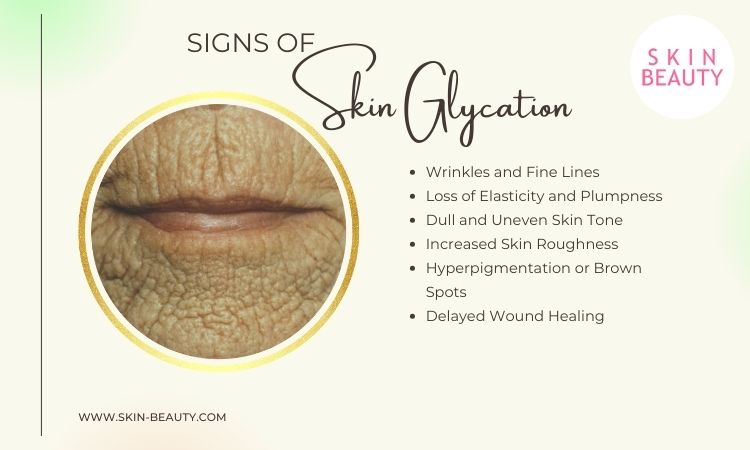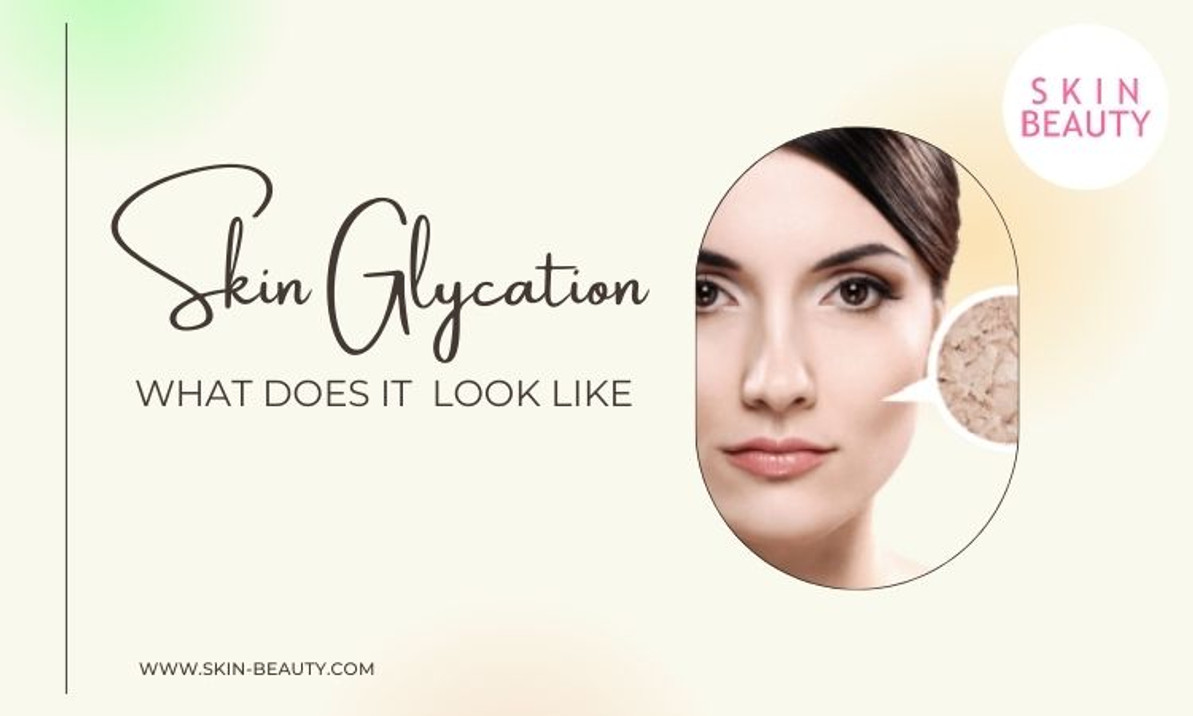What Does Skin Glycation Look Like?
What Does Skin Glycation Look Like?
What is Skin Glycation?
Before we jump into the details of what glycation in the skin looks like, lets go over with what it is. Skin glycation is damage caused to the skin when sugar molecules bind to collagen and elastin fibers leading to the formation of advanced glycation end products, a harmful byproduct of the body's natural sugar metabolism process. The effects of the glycation process compromise skin collagen and elastin fibers, resulting in loss of skin elasticity and plumpness, wrinkles, dullness, and rough texture. Our article, Skin Glycation, goes into more detail about understanding the formation of advanced glycation.
What's the Difference Between Glycated Skin and Regular Aging?
You may wonder about the difference between glycation skin and regular aging since they are very similar. But the fact is that they stem from different processes. Regular aging is natural intrinsic aging, where collagen and elastin gradually break down due to time and environmental factors like sun exposure. As we age, this causes wrinkles, sagging, and thinner skin.
Glycation, on the other hand, is more of a glucose related issue. It happens when excess sugar in the body binds to proteins like collagen, creating harmful compounds called advanced glycation end products (AGEs). These AGEs make the skin less elastic, dull, and more prone to deep wrinkles—almost like aging on overdrive. The kicker? Glycation damage can start earlier and might not be as reversible as typical aging signs, so managing sugar intake and using antioxidant-rich skincare can make a difference.
Signs of Glycation

Wrinkles and Fine Lines
The effects of glycation cause the collagen and elastin fibers to stiffen, resulting in deep, stubborn wrinkles often seen over the cheeks and chin. The wrinkles appear more of a cross-hatched appearance, while normal wrinkles are linear and generally parallel to each area of facial movements.
Loss of Elasticity and Plumpness
Research has shown that AGEs cause cellular dysfunction by modifying intracellular molecules, which accumulate in tissues with aging. Glycation in the skin from high sugar levels weakens the structural support of collagen and elastin, resulting in a lack of resiliency, causing skin sagging.
Dull and Uneven Skin Tone
The buildup of dead skin cells causes the skin to appear dull, flat, and lackluster. The skin can become sallow, exhibiting a yellow color rather than a natural healthy glow.
Increased Skin Roughness
Rough skin can feel bumpy and dry to the touch. It also may appear raised or uneven in certain areas. Flaky and dry skin can also accompany rough skin texture.
Hyperpigmentation or Brown Spots
Glycation is a process that can also contribute to skin hyperpigmentation and uneven skin tone. Advanced glycation end-products can modify pigments in the skin because proteins are less effective in transporting and synthesizing melanin, a natural pigment that gives skin its color.
Delayed Wound Healing
According to NIH, increased dietary AGE intake delayed the wound closure time and interfered with angiogenesis and granulation tissue maturation, which were in contrast to those associated with a low AGE-fed diet.
Although glycation is a natural process, it is important to understand that minimizing the formation of AGEs is possible. The article How To Prevent and Treat Skin Glycation goes through all the details from lifestyle, diet, and treatments to address glycation in skin and improve skin health.
Recent Posts
-
The Power of Exosomes in Skincare
Exosomes in Skin Care: The Future of Exosome and Regenerative Medicine in Skin Science Skincare inn …Oct 17th 2025 -
Steps for a Skincare Routine
6 Steps to a Proper Skin Care Routine: Your Esthetician-Approved Guide to The Best Skin If you've ev …Aug 11th 2025 -
Treatment of Hyperpigmentation
How to Treat the Appearance of Hyperpigmentation This Summer: Your Complete Guide Summer sun is wond …Jul 17th 2025




